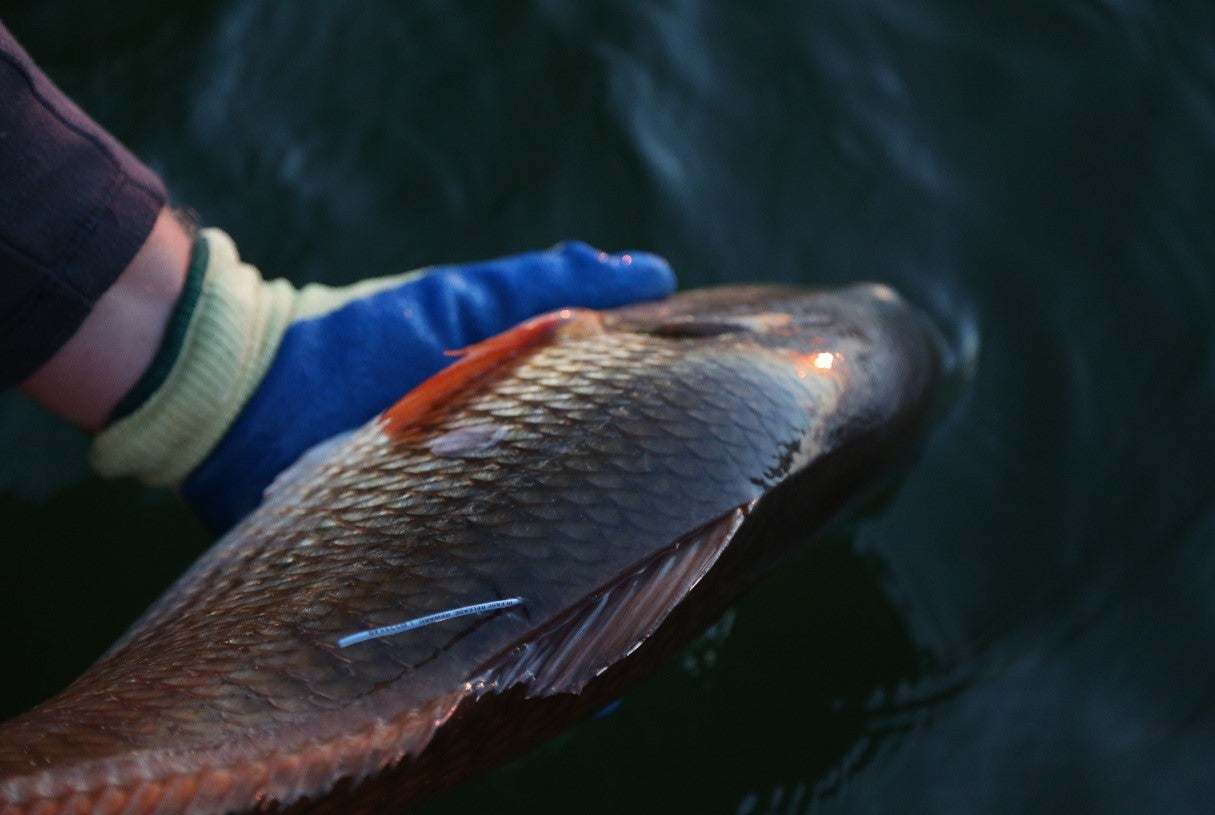Tracking Fish with Acoustic Telemetry—Implementation of an Exciting Technology in Lake Pontchartrain
By
Nic Dixon, Outreach Associate
The Louisiana Department of Wildlife and Fisheries (LDWF) and many other fisheries organizations and scientists worldwide have traditionally used fish tags to keep track of fish populations. You may have even applied these simple dart-tipped plastic tags to a fish yourself. Standard fish tagging efforts (in part) identify where the fish was originally captured, Point A, and then where the fish was recaptured, Point Z. But there is not a clear picture of where these fish were for points B, C, D, etc.
Now, thanks to an acoustic telemetry project, LDWF has been able to pinpoint the exact locations of 244 speckled trout, 64 redfish and 18 bull sharks in the Lake Pontchartrain area.
What exactly is acoustic telemetry you ask? It’s the ability to track animals at a distance using sound. An acoustic transmitter that emits a pinging sound is surgically implanted into the fish. When the fish swims within a half mile of one of the dozens of stationary receivers scattered around Lake Pontchartrain, it records the transmitter’s ping as time, date and fish ID number. This data is downloaded from all of the receivers every 6-8 weeks, and LDWF publishes their data in an interactive map: the LDWF fish tracker.
View post on imgur.com

Diagram of redfish with an acoustic transmitter. Image credit: Ashley Ferguson, LDWF
This information isn’t just exciting for the intrigued anglers in Lake Pontchartrain, it’s also exciting for scientists, policymakers and conservationists alike. This newly implemented technology has started to shed light on everything from fish migration patterns and habitat preferences to residency time and environmental impacts.
Seeing how fish responded to the brief opening of the Bonnet Carre’ spillway earlier this year is of particular interest. It has allowed us to study how fish might react to a large input of river water during high water events. This technology would also be useful in determining how fish respond to changes resulting from the planned Mid-Breton and Mid-Barataria sediment diversions. Additional research would be needed to understand how this technology can be used to monitor these basins. Nonetheless, an interesting observation was made by Ashley Ferguson, LDWF Biologist and fish telemetry expert, that “under the conditions at the time of the spillway opening, including the cooler water temperatures and the short 22-day opening, adult tagged spotted seatrout (speckled trout) and red drum (redfish) were not observed leaving Lake Pontchartrain.” This observation could help inform how a future sediment diversion might be operated and minimize impact on certain fish populations.
Our coalition of organizations is excited to see this technology being developed and hope its use will extend to other places such as the Breton and Barataria Basins. It could help tremendously with the state’s plan for monitoring and adaptive management of its restoration projects’ impact on fisheries.

Redfish being released back into Lake Pontchartrain after having an acoustic transmitter being surgically implanted. Photo credits: Gabe Griffin, LWDF
Nic Dixon assists in CRCL community engagement efforts with workshops, interviews, data collection, and any additional communication tasks such as producing and distributing video content. Nic has had a diversity of lab and field research experiences in ecology ranging from the Yukon River Delta in Alaska to the Mississippi River Delta in Louisiana. He joined CRCL in 2014 after graduating from Louisiana State University’s School of Renewable Natural Resources.